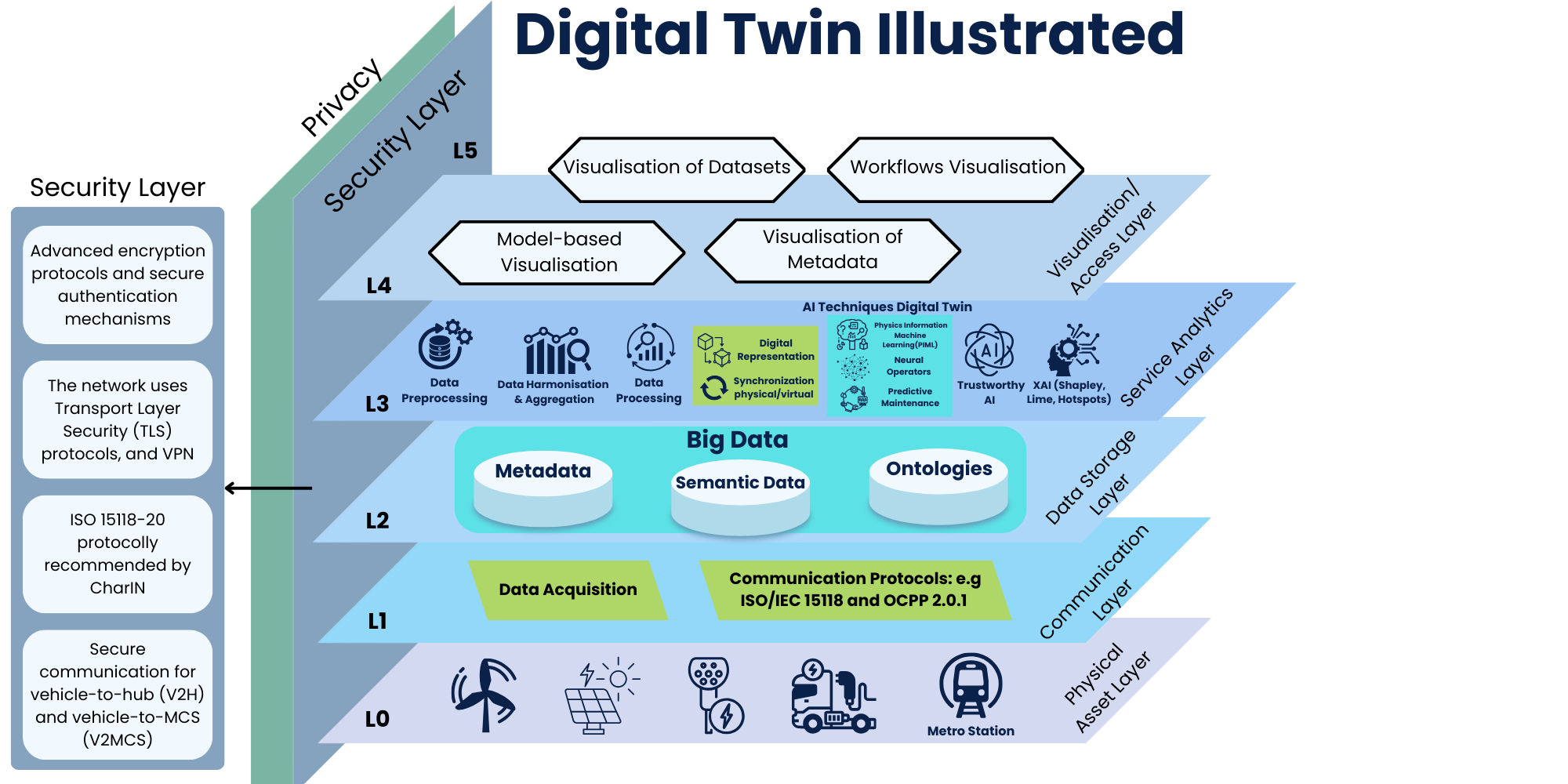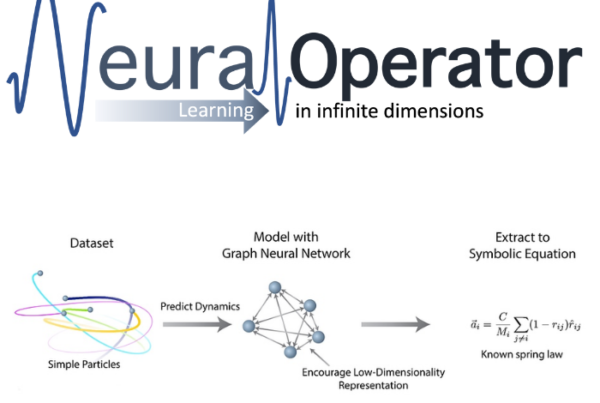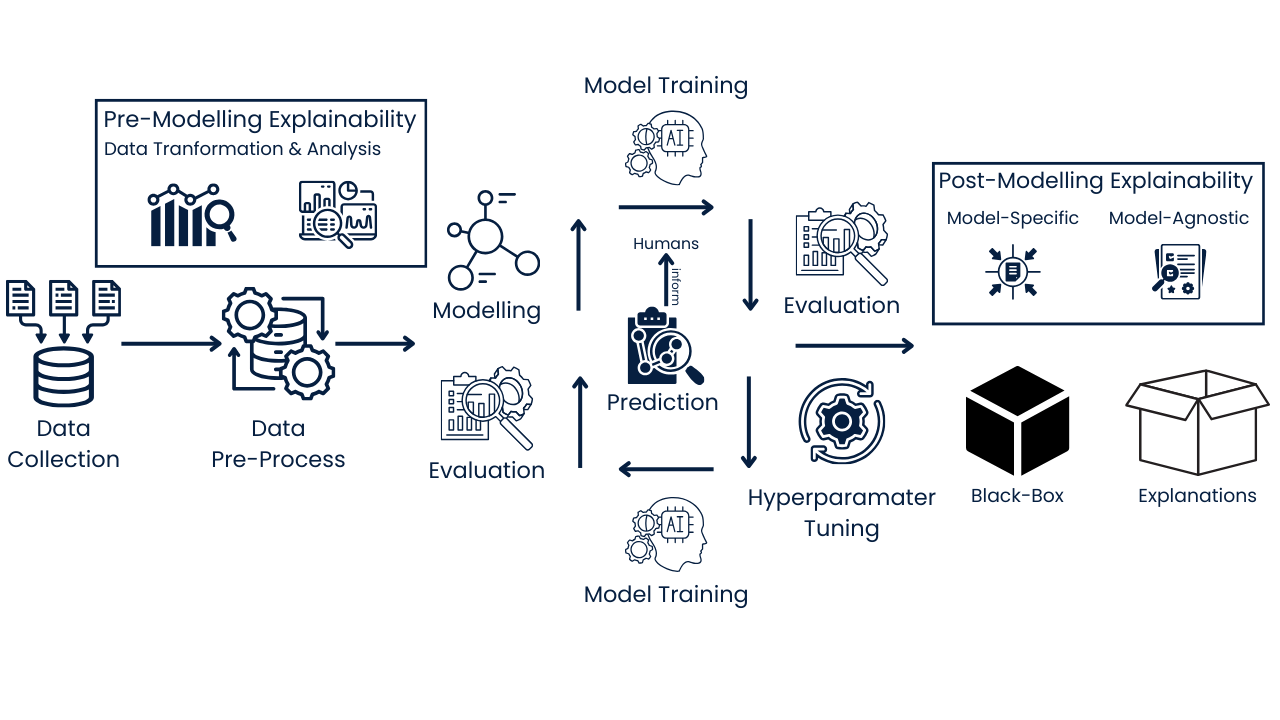
The Digital Twin architecture illustrated in the diagram is structured across several interconnected layers, ensuring seamless integration and advanced functionality. At the base (L0), the Physical Asset Layer captures real-world data from physical entities like solar panels, electric vehicles, and metro stations. L1, the Communication Layer, manages data acquisition via secure protocols such as ISO/IEC 15118 and OCPP 2.0.1, ensuring vehicle-to-hub (V2H) and vehicle-to-MCS (V2MCS) communication. The Data Storage Layer (L2) organizes and harmonizes metadata, semantic data, ontologies, and big data for efficient analytics. L3, the Service Analytics Layer, applies AI techniques, including predictive maintenance and neural operators, while synchronizing physical and virtual representations. The Visualization/Access Layer (L4) presents insights through dataset visualization, metadata visualization, and model-based workflows. Overarching this, the Security Layer implements TLS protocols, VPNs, and ISO 15118-20 encryption for robust protection, emphasizing privacy across all layers. This comprehensive stack enables digital twins to deliver real-time, actionable intelligence.







